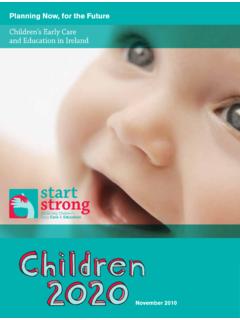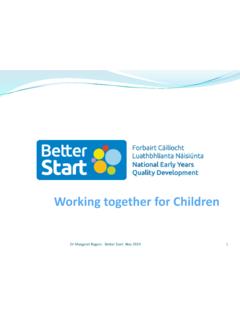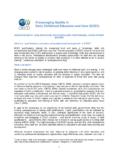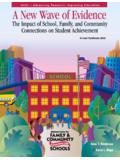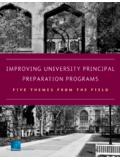Transcription of The Economics of Children’s Early Years - Start Strong
1 The < Strong >EconomicsStrong > of Children's < Strong >EarlyStrong > Years a < Strong >EarlyStrong > Care and Education in Ireland: Costs and Benefits Table of contents a Foreword 3. Children's < Strong >EarlyStrong > Years an economic priority? 4. Benefits 1: Raising educational outcomes 6. Benefits 2: Enhancing employability and competitiveness 7. Benefits 3: Reducing child poverty 8. Benefits 4: Improving health 9. Benefits 5: Preventing social problems 10. The higher the quality, the greater the benefits 12. Ensuring benefits for all 13. Cost-benefit analysis 14. The < Strong >EconomicsStrong > of Children's < Strong >EarlyStrong > Years 3. Foreword Economic analysis of policy issues is always important. At a time of recession, it is even more important, as the Government is rightly concerned to ensure that its policy decisions will boost the country's economic prospects, and that the benefits of any investments it makes will outweigh the costs.
2 Of course, children's < Strong >EarlyStrong > care and education is about much more than < Strong >EconomicsStrong > . It's about children's well-being and happiness, supports for families, children's rights, reducing child poverty, social justice, and giving all children a good < Strong >StartStrong > in life. It's all these things and more, but a rapidly growing body of research has shown conclusively that it's also good for the economy. This report gives an overview of recent research on the < Strong >EconomicsStrong > of children's < Strong >EarlyStrong > care and education. The first part of this report ( ) presents evidence on some of the benefits of < Strong >EarlyStrong > care and education that are of greatest economic importance for educational outcomes, employability, health, child poverty and the reduction of social problems such as crime.
3 The second part of the report ( ) then points to research on the type of services and supports we need to put in place if we are to achieve the large and widespread economic benefits that are possible services and supports must be of high quality, and they must be available to all. The final part of this report ( ) summarises cost-benefit analyses of < Strong >EarlyStrong > care and education. The evidence presented in this report shows the economic sense of the Government increasing its level of investment in children's < Strong >EarlyStrong > Years . The economic case is compelling when policy makers take a long-term view. While there are immediate costs in delivering high quality care and education services and supports for all young children, the benefits last many Years , transforming children's life-chances as they grow older.
4 In the short-term, the Government should maintain current levels of public expenditure on services and supports for young children. In looking for ways to reduce current spending, the Government must avoid cuts that would in turn lead to a long-term increase in public spending, as would surely happen if the Government were to cut investment in young children. And there are steps the government can take right now to improve quality, increase transparency and integrate existing supports and services at little or no cost as detailed in < Strong >StartStrong > Strong 's Children 2020. report. We are very grateful to Goodbody Economic Consultants for all their work on the cost-benefit analysis. And we would like to express our sincere thanks to the Research Advisory Group, and in particular to Professor Brian Nolan, who generously gave his time and expertise to advise < Strong >StartStrong > Strong on the project.
5 Finally, we'd like to thank the staff team, particularly Toby Wolfe, for their work on the cost benefit analysis and preparing this report. Tony Crooks Ciair n de Buis, Chairperson, < Strong >StartStrong > Strong Director, < Strong >StartStrong > Strong The < Strong >EconomicsStrong > of Children's < Strong >EarlyStrong > Years 4. Children's < Strong >EarlyStrong > Years an economic priority? Source org/content/resource/heckman- equation-brochure P rograms targeted towards the earliest Years Rate of Return to Investment in Human Capital Preschool programs Schooling Job training 0 3 4 5 School Post-school Returns per annum to a unit dollar invested Reviewing the findings of international research The above chart summarises Professor Heckman's on human capital, Professor James Heckman the research, showing the rate of return to investment in Nobel prize-winning economist concludes that the educational and developmental resources to be much economic return to investment in children's < Strong >EarlyStrong > higher for children aged 0-5 than at a later stage.
6 Years is higher than the return to investment in later This downward-sloping curve closely resembles curves childhood. that show the rate of brain development in the The reason for this, according to Professor Heckman, growing child much faster in the < Strong >EarlyStrong > Years than in is that the development of a child's skills builds later childhood or in adulthood. on skills they developed In children's The irony is that graphs showing the rate of brain very earliest Years , children develop essential skills development and the return on investment in or dispositions, such as self-control, curiosity and education are generally the inverse of graphs perseverance skills that are both important in showing the actual level of investment in education themselves and that help children make the most of at different ages of childhood (graph page 4).
7 Their later education. 1. J. Heckman (2006) The < Strong >EconomicsStrong > of Investing in Children, Dublin: UCD Geary Institute, Policy Briefing The < Strong >EconomicsStrong > of Children's < Strong >EarlyStrong > Years 5. Source: E. Melhuish (2010). Submission to the Scottish Parliament's Finance Committee's Inquiry into Preventative Spending. Brain Development Spending on health, education income support, social services and crime Intensity of brain's development Public Expenditure Conception Birth 1 3 10 60 80. Age Brain development and public expenditure, by age. In his submission to a 2010 inquiry into preventative < Strong >EarlyStrong > childhood development indicates is simply that spending, carried out by the Scottish Parliament's services and supports for children's < Strong >EarlyStrong > Years should Finance Committee, Edward Melhuish (Professor be one of the Government's foremost priorities and of Human Development at the University of London) that they merit a much higher level of investment presented the following graph, showing typical than is currently made.
8 Patterns of social expenditure by age in comparison Based on the evidence of high returns to investment with the intensity of brain development at different in children's < Strong >EarlyStrong > Years , the OECD's 2010 report ages. The inverse relationship between the two lines Doing Better for Children argued that public on the chart shows vividly the mismatch between spending on services for children should be front- the age at which Governments spend most money loaded on children's < Strong >EarlyStrong > Years . According to on children and the age at which children's brains the OECD, < Strong >EarlyStrong > investment in children is vital. develop. Investment needs to rise in the Dora the Explorer . Of course, public expenditure at all stages of the Years of < Strong >EarlyStrong > childhood relative to the Facebook.
9 2. education system is important. What the research on Years of later childhood.'. < Strong >EarlyStrong > childhood services and supports a low priority in Ireland? Of all Ireland's public spending on children and families, only 20% goes towards < Strong >EarlyStrong > childhood (ages 0-5) while 37% goes to the middle Years (6-11) and 44% to the later Years (12-17). And Ireland's spending on services for young children is particularly weak by international standards, especially for the very youngest children (aged 0-2), as a large proportion of social expenditure for young children in Ireland takes the form of cash benefits rather than services. OECD (2010) Doing Better for Children, Paris: OECD, 2 OECD (2010) Doing Better for Children, Paris: OECD, The < Strong >EconomicsStrong > of Children's < Strong >EarlyStrong > Years 6.
10 Benefits 1: Raising educational outcomes Source: K. Sylva et al. (2008) EPPE. 3-11: Final Report from the Primary Reference Group: Phase, Low HLE and No Pre-School Effect size no pre-school pre-school 0. 0. Low Medium High < Strong >EarlyStrong > Years HLE. Combined impact of home learning environment (HLE) and pre-school attendance on mathematics attainment at age 11. Children learn rapidly from their very first days, age 3 (now through to age 16), has found that and their experiences in their < Strong >EarlyStrong > Years lay the educational outcomes are promoted where foundations for their subsequent educational parents can offer a supportive home learning attainment. Both experiences in the home and < Strong >EarlyStrong > environment (such as reading to the child, care and education outside the home are critical in teaching songs, painting, taking children on visits), shaping children's learning.
